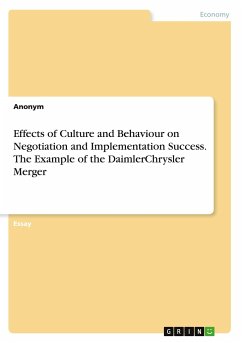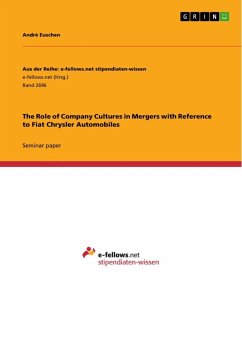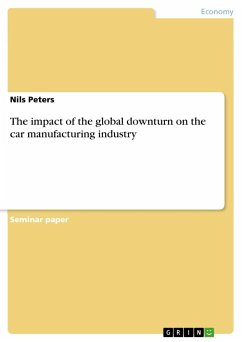Research Paper (undergraduate) from the year 2008 in the subject Business economics - Business Management, Corporate Governance, grade: A-, International School of Management Dortmund , language: English, abstract: Back in 1998, Daimler-Benz, the German manufacturer of luxury automobiles, had only captured less than one percent of the American market (Daimler-Benz AG, Standard & Poor's Stock Reports. New York: Standard & Poor's, Inc., July 21, 1997). Meanwhile, the American Chrysler Corporation was willing to extend its international reach, especially in Europe. Given the circumstances, both companies came to the conclusion that a merger would make sense. On May 7th, 1998, the merger was o cially announced as the largest trans-Atlantic merger ever. However, this buyout - which could have led to the creation of the greatest car manufacturer in the world - had failed in less that ten years. On May 14, 2007, the DaimlerChrysler company was already a thing of the past. Almost two years after the sale of Chrysler, a question remains: Why the merger failed? If we compare a merger to a marriage, we would say that they married the wrong persons. But how managers and executives from the two companies has gotten it so wrong?








